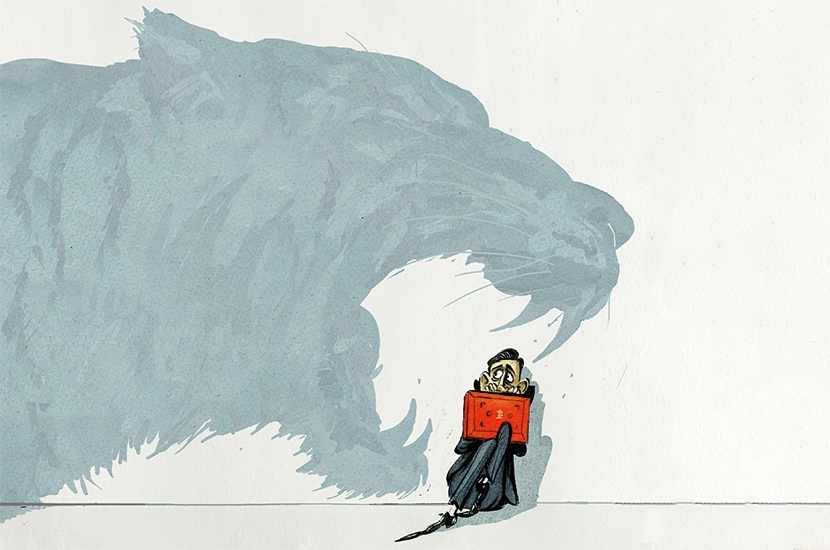Two months ago The Spectator reported on what was keeping Rishi Sunak awake at night ahead of the Budget: an inflation resurgence that could damage Britain’s economic recovery as it comes out of the pandemic. He deliberately designed his March Budget with inflation in mind, trying to make the UK’s finances ‘Biden-proof’ if inflation or interest rates started to move, and the cost of servicing the country’s debt became remarkably more expensive.
At the time, Sunak was a lone voice on the matter. His inflation fears put the decision to raise tax into perspective, but many remained critical of his rather cautious approach. Inflation seemed a strange focus as the conditions for major change appeared glaringly absent. Was Sunak just repeating a tired fiscal-hawk narrative, which also insisted after the 2008 crash that the headline figure for inflation would surge?
Around the same time as the Budget, Larry Summers (who worked in both Bill Clinton and Barack Obama’s administrations) started warning that the trillions being spent on Covid stimulus packages in the United States could lead to an inflationary spike. He too seemed like an outlier. But as it became clear that Joe Biden’s spending sprees would last long after his immediate Covid relief, the question started to creep: would this all eventually end in inflation?
New figures out in the United States yesterday have forced the question. The headline rate of inflation has risen to 4.2 per cent on the year — nearly double what economists were forecasting. Core inflation, excluding food and energy, also rose, to 3 per cent. Change is happening fast: the Consumer Price Index increased 0.8 per cent from March, the fastest rise since September 2008. This is the nature of inflation. As Friedrich Hayek warned in 1969, ‘if the tiger (of inflation) is freed he will eat us up; yet if he runs faster and faster while we desperately hold on, we are still finished.’
The Federal Reserve is confident that the cat is still in the bag. But despite attempts from its vice chairman Richard Clarida to play down the numbers, markets are responding. US stocks were already dropping early in the week, as fears that inflation would outpace forecasts started to rise. The Dow Jones, S&P 500, and Nasdaq slipped further yesterday, while the ten-year Treasury yield bumped up to 1.67 per cent.
So, was Sunak vindicated in his inflation fears? It’s difficult to conclude anything based on monthly figures, as this inflation rise may be explained by a rise of ‘transitory factors’ that will soon balance out. Yesterday’s figures could well be pegged to America’s booming vaccination programme, which is enabling more economic activity. Another explanation is temporary supply shortages, which should be sorted once businesses adapt to the new demands of their consumers. And some economists argue an uptick in inflation is no bad thing, as it helps to address other problems like burgeoning debt levels — just so long as it remains under control.
This is the sticking point. Normally, inflation could be fought by raising interest rates, but that tool would be a politically painful one to use right now in countries like the United States, whose latest set of spending packages is set to add over $1 trillion (£713 billion) to the deficit over the next ten years. Sunak knows it’s certainly unaffordable in the UK, which is set to borrow hundreds of billions more in the coming years.
As Andy Haldane, chief economist at the Bank of England, pointed out earlier in the year, many of the conditions that killed over inflation over the past few decades have disappeared: the effects of budding globalisation, the entrance of China onto the global economic stage and the surge of cheap goods and labour that came with it are unlikely to be repeated. Furthermore, no one quite knows what happens to modern economies when you force them into hibernation and then let them loose again, with a lot more money pumped into the real economy than there was before it got locked down.
Clarida remains optimistic that all is under control, telling the National Association for Business Economics today that he expects ‘inflation to return to — or perhaps run somewhat above — our 2 per cent longer-run goal in 2022 and 2023.’ For now it seems the Fed isn’t moving in its position, but pressure is likely to mount. If its calculations are wrong, an inflationary spike could have a damaging effect on the US’s recovery, not to mention a knock-on impact across the rest of the world.
It will be some time before we know if Sunak’s worst nightmares are at risk of becoming reality. But it would seem he is no longer alone with these fears on his mind. America’s headline inflation rate has grabbed everyone’s attention: Sunak’s concerns may yet be borne out.







Comments